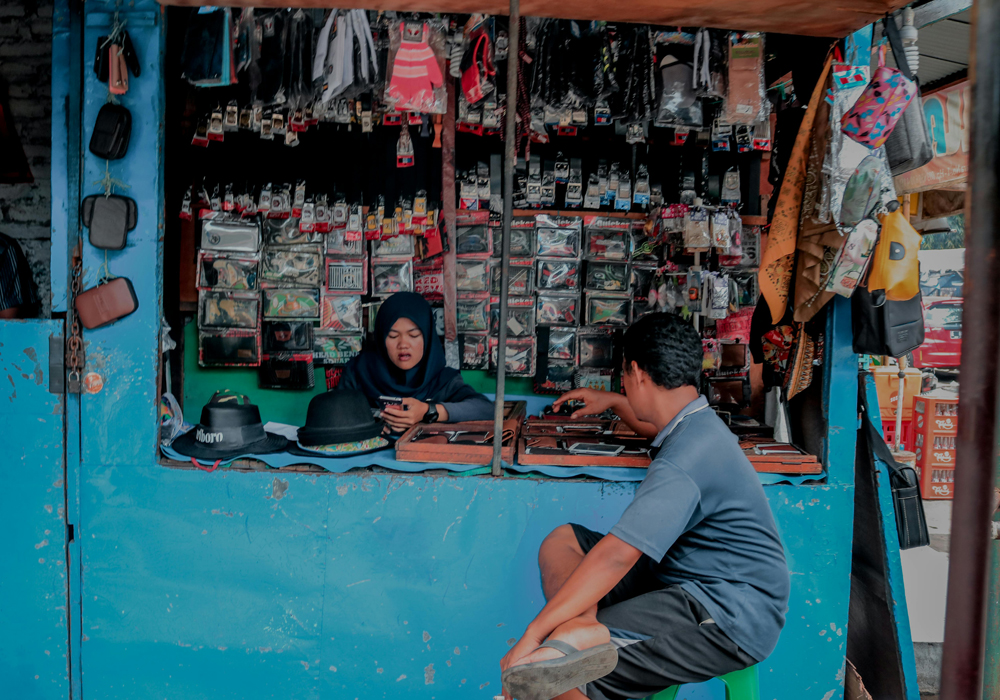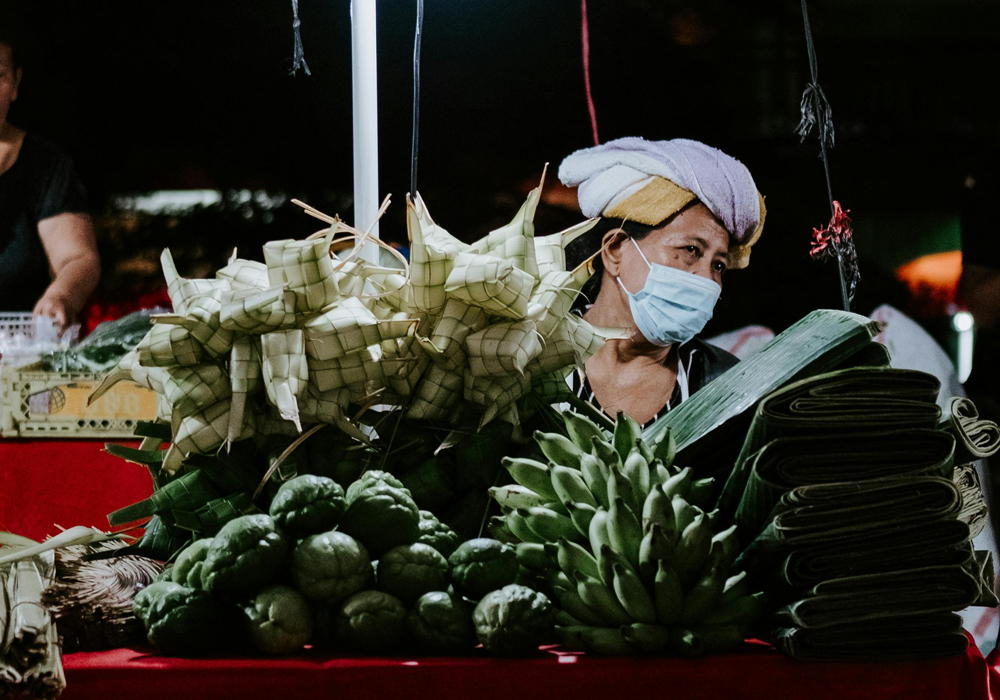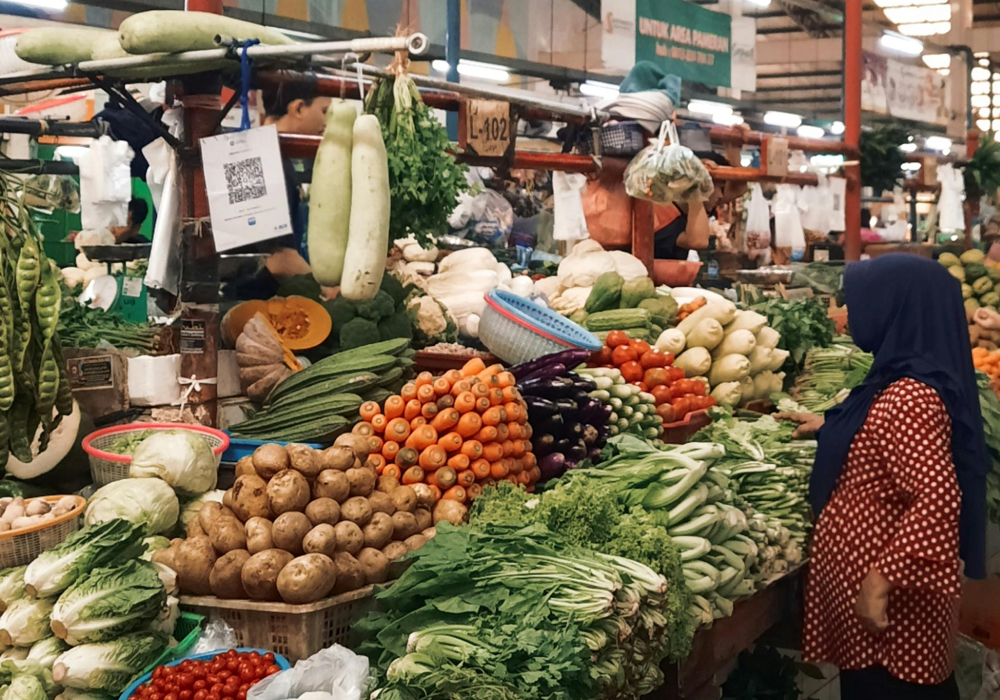Warung and Pasar – In Indonesia, two ubiquitous institutions, twarung and pasar, are not merely commercial establishments; they are vibrant, pulsating epicenters of daily life, deeply interwoven into the social, economic, and cultural fabric of the nation.
To understand Indonesian society, one must first grasp the essence and significance of these fundamental entities.
What is a Warung?
At its core, a warung (pronounced “wah-roong”) is a small, often family-owned, and unpretentious business. While the term broadly encompasses various small shops, its most common association, particularly among food enthusiasts and tourists, is with a humble eatery or food stall.
Think of it as Indonesia’s answer to a diner, a street-side cafe, or a local convenience store, all rolled into various specialized forms.

What you can find or what kind of stuff people sell in a Warung:
The offerings at a warung vary significantly depending on its specialization:
- Warung Makan (Eating Stall): This is arguably the most prevalent type. Here, you’ll find an array of home-cooked Indonesian dishes. Often, food is displayed in a glass case, allowing customers to point and choose. Common offerings include:
- Nasi Campur: Mixed rice with various side dishes (vegetables, meat, eggs).
- Nasi Goreng & Mie Goreng: Fried rice and fried noodles.
- Bakso & Soto: Meatball soup and various traditional Indonesian soups.
- Sate: Grilled skewers of meat (chicken, beef, goat, or even pork in non-Muslim areas).
- Gado-Gado & Pecel: Vegetable salads with peanut sauce.
- Ikan Bakar/Goreng: Grilled or fried fish.
- Ayam Goreng/Bakar: Fried or grilled chicken.
- Many warung makan specialize in regional cuisine, such as Warteg (Warung Tegal) for Javanese food, or smaller Warung Padang for West Sumatran dishes.
- Warkop (Warung Kopi – Coffee Stall): These focus on beverages, primarily coffee (both instant and traditional brewed), tea, and sometimes simple snacks like pisang goreng (fried bananas), roti bakar (grilled bread), or various crackers (kerupuk).
- Warung Rokok/Kelontong (Cigarette/Grocery Stall): These are essentially miniature convenience stores, often set up in front of a house. They sell daily necessities like cigarettes (single sticks are common!), instant noodles, candies, soft drinks, bottled water, toiletries, and sometimes basic household items.
- Warung Jamu: Specializes in jamu, traditional Indonesian herbal medicines.
- Specialized Food Warungs: Many warungs become famous for one specific dish, perfecting it over generations. Examples include Warung Babi Guling (roast pork, particularly in Bali), Warung Bakso, or Warung Sate.
Price and Location of Warungs:
- Price: Warungs are renowned for their affordability. A full, satisfying meal at a warung makan can cost as little as IDR 10,000 to IDR 30,000 (roughly USD $0.60 to $2.00). Snacks and drinks are even cheaper. This makes them highly accessible to people from all economic backgrounds.
- Location: Warungs are ubiquitous. They can be found on virtually every street corner, nestled in residential neighborhoods, along busy roads, near offices, and even in more rural areas. Many are simple roadside stalls with rudimentary seating, while others might be small, converted rooms within a family home. Their pervasive presence makes them incredibly convenient.
What is a Pasar?
A pasar (pronounced “pah-sar”) is the Indonesian word for market. Unlike the singular focus of most warungs, a pasar is a communal space where multiple vendors gather to sell a vast array of goods. It represents a more organized, albeit often chaotic and vibrant, commercial hub.

What you can find or what kind of stuff people sell in a Pasar:
Pasars, especially traditional ones, are sensory overload in the best possible way. The sheer variety of goods is staggering:
- Fresh Produce: This is often the heart of a pasar. You’ll find an abundance of fresh fruits (tropical and seasonal), a dizzying array of vegetables, aromatic herbs, and an incredible selection of spices, often sold in bulk.
- Meat and Fish: Freshly butchered meats (chicken, beef, occasionally goat or pork depending on the region), and a wide variety of freshly caught seafood are standard offerings, often laid out on ice or simply on tables.
- Staple Foods: Large sacks of rice, sugar, flour, cooking oil, eggs, noodles, and various dried goods are readily available.
- Prepared Foods and Snacks: Many pasars have sections dedicated to ready-to-eat traditional snacks (jajan pasar), sweets, and sometimes even small warung-like stalls selling meals.
- Household Items: Basic kitchenware, plastic goods, cleaning supplies, simple tools, and sometimes even small electronics or hardware.
- Clothing and Textiles: Batik fabrics, sarongs, traditional dress, everyday clothing, shoes, and accessories are commonly sold.
- Handicrafts and Souvenirs: Particularly in tourist areas like Bali, pasars (or specific Pasar Seni – art markets) are treasure troves for local arts and crafts, wood carvings, silver jewelry, paintings, and souvenirs.
- Ceremonial Items: In Bali, traditional pasars also sell items essential for religious ceremonies, such as flower offerings (canang sari components), incense, and ceremonial textiles.
Price and Location of Pasars:
- Price: Prices in traditional pasars are generally negotiable (bargaining is expected!), especially for non-food items like clothing or handicrafts. For fresh produce and daily necessities, prices are usually very competitive, often lower than supermarkets due to fewer intermediaries. The more you buy, the more leeway you have for bargaining.
- Location: Pasars can range from simple open-air morning markets in villages to large, multi-story buildings in major cities. They are typically centrally located within communities, easily accessible to local residents. Many are “pasar pagi” (morning markets), bustling from pre-dawn until midday, while “pasar malam” (night markets) often focus more on food and non-essentials.
The Role of Warung and Pasar in Indonesian Daily Life
The warung and pasar are far more than just places of commerce; they are vital arteries sustaining the daily rhythm and social cohesion of Indonesian society.
1. Economic Accessibility and Livelihood: Both warungs and pasars represent the backbone of the local economy. They provide accessible and affordable goods and services for the majority of the population, particularly those with lower incomes.
For countless Indonesians, operating a warung or a stall in a pasar is their primary source of livelihood, creating self-employment opportunities and supporting families. They foster a robust informal economy that complements the formal sector.
2. Culinary and Food Security: Warungs are crucial for daily sustenance. They offer convenient, affordable, and often delicious home-cooked meals for those who cannot or do not wish to cook at home, such as office workers, students, and laborers.
This ensures food security on a daily basis for millions. Pasars, in turn, are the primary source of fresh ingredients for households and larger restaurants, ensuring a constant supply of produce, meat, and fish that fuels the nation’s diverse culinary traditions. They are where the vast majority of Indonesians buy their groceries.
3. Social Hubs and Community Building: Beyond transactions, warungs and pasars are quintessential social spaces.
- Warungs often serve as informal gathering points. People sit, chat, share news, discuss local happenings, and even conduct small business meetings over a cup of coffee or a plate of nasi goreng. They foster a sense of community and familiarity between neighbors and regular customers. The warung owner often knows their customers by name and even their regular orders.
- Pasars are vibrant melting pots of community interaction. The act of shopping involves not just buying but also haggling, exchanging pleasantries, and catching up with acquaintances. They are sensory experiences, full of sights, sounds, and smells that contribute to the unique atmosphere of Indonesian daily life. They are places where traditions are upheld, and where the pulse of the local community can be truly felt.
4. Cultural Preservation and Identity: Both institutions play a significant role in preserving Indonesian culture and culinary heritage.
- Warungs uphold traditional recipes and cooking methods that might be lost in more modernized settings. They are the guardians of authentic flavors and regional dishes, passing them down through generations.
- Pasars showcase the incredible diversity of local produce, spices, and traditional crafts. They are living museums of traditional trading practices, including the art of bargaining, and they sustain local artisans and farmers by providing a direct marketplace for their goods. In Bali, pasars are also vital for providing the ceremonial items central to Hindu religious life.
5. Convenience and Accessibility: Their sheer number and diverse locations mean that daily necessities and food are always within reach for most Indonesians. This pervasive presence eliminates the need for long commutes for basic needs, contributing to the efficiency of daily life, especially for those without private transportation.
In conclusion, the warung and the pasar are more than just commercial entities; they are deeply embedded cultural institutions that reflect Indonesia’s vibrant communal spirit, economic pragmatism, and rich heritage.
They are the beating heart of villages and cities alike, providing sustenance, fostering community, and upholding traditions in the dynamic tapestry of Indonesian daily life.
